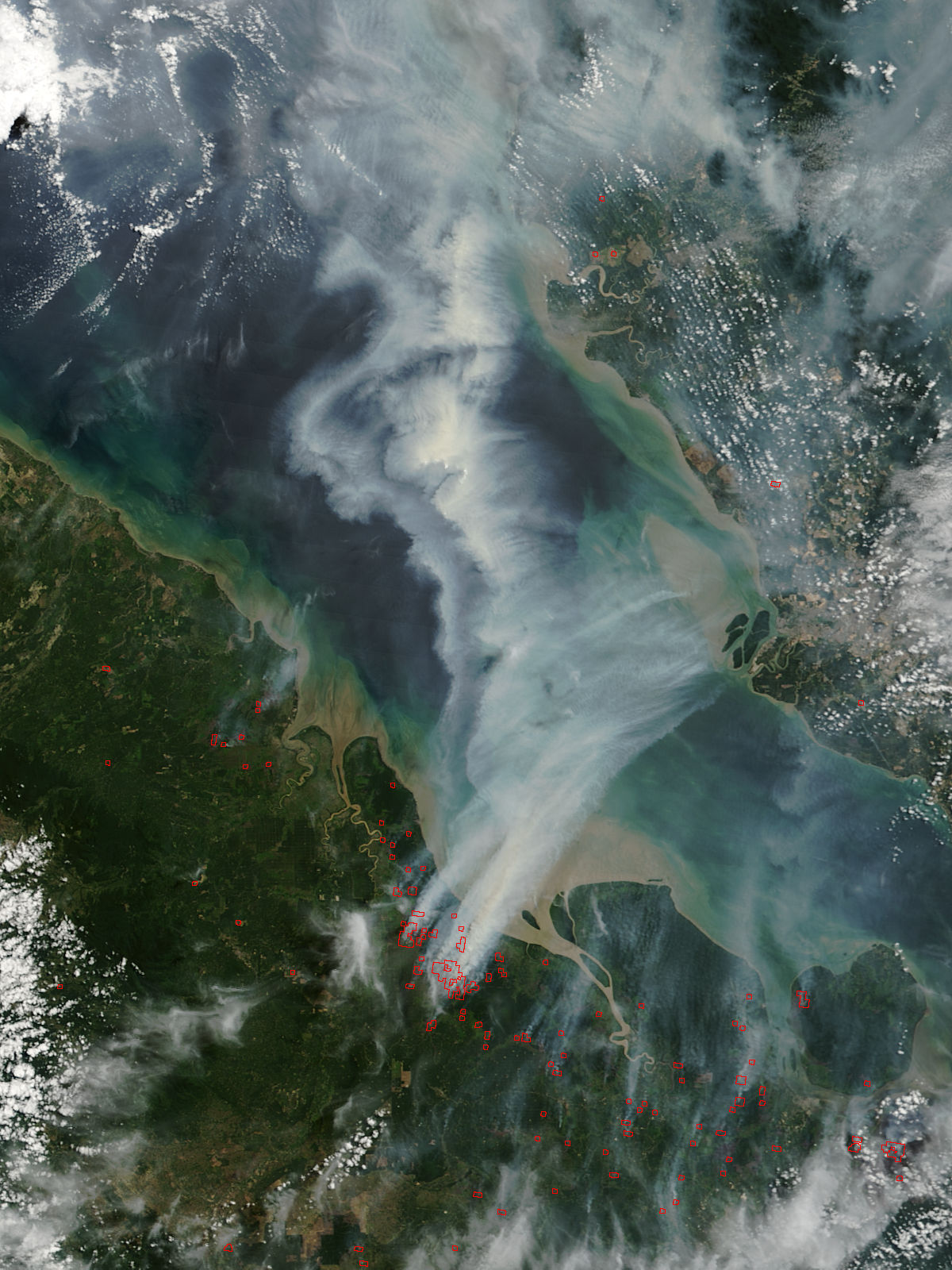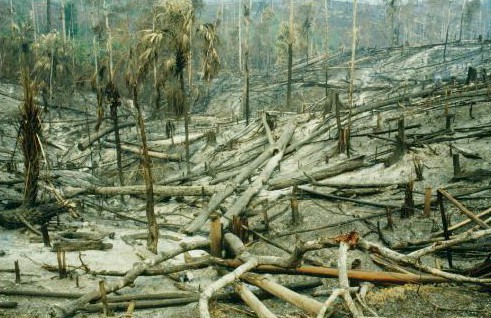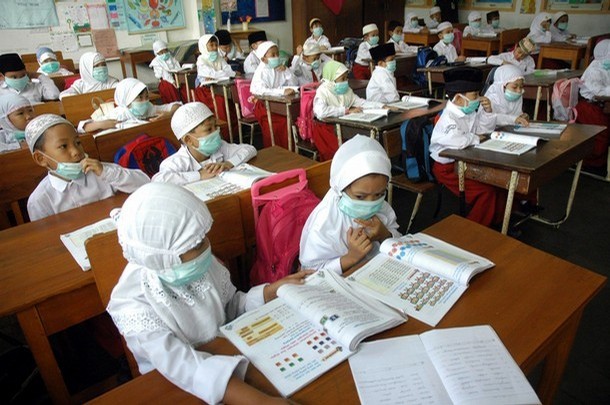![]()
Incendios Forestales y Quema de Rastrojos: Efectos sobre la Calidad del Aire y Salud Humana
En España somos muy conscientes de los devastadores efectos de los incendios forestales (ver también este artículo de la Revista Ecosistemas), si bien nadie puede negar que forma una parte consustancial de muchos de nuestros ecosistemas. También hemos hablado de sus repercusiones sobre la salud humana. Sin embargo, se trata de bagatelas cuando se compara con la quema residuos e cosechas, y lo que es peor aún, de ecosistemas prístinos en otras partes del mundo. La incidencia de los incendios forestales en el SE Asiático sigue aumentando, conforme lo hace la deforestación de tierras vírgenes. Y esta última lo hace a su vez según aumentan las demandas de biocombustibles. Resulta por tanto rocambolesco que algunos ecologistas de salón, llamen mentirosos a medio mundo, cuando defienden la agroenergética, y se queden tan orondos. ¿Cuál es pues la frontera entre la “cultura verde” y el terrorismo ecológico? En el SE asiático, el incesante crecimiento de la población requiere la nueva puesta de tierras en cultivo. Más aún, la demanda de aceite de palma para los biocombustibles y otros usos, está generando la demolición de ecosistemas cuya biodiversidad aun se desconoce. Muchas de tales actividades se realizan sobre bosques tropicales que, a menudo, crecen sobre turberas con muchos metros de espesor, por lo que su drenaje para la reclamación agrícola desprende ingentes cantidades de gases de invernadero. Especialmente en Indonesia, durante la estación seca, el número e incidencia de los fuegos aumente incesantemente (pinchar en este enlace). El problema es tan grave que los gobiernos de los países vecinos se lamentan de las graves repercusiones que vecinos pirómanos generan en sus economías (turismo), vida cotidiana (smog que tiende a complicar la visibilidad viaria y de sus aeropuertos) y la salud de su población que respira un aire insano y cargado de partículas (peor que el que se conoce en las ciudades más contaminadas del mundo). Los efectos sobre la salud humana comienzan a ser más que serios, como podréis observar en las tres noticias que os exponemos más abajo. Tales prácticas, como ya comentamos se realizan durante la estación seca. Sin embargo, estudios recientes confirman que son las actividades humanas y no los ciclos de sequía o el cambio climático sus verdaderos responsables.

Incendios forestales en Sumatra. Fuente NASA
Siempre cabe pensar que las necesidades alimentarias de una población hambrienta, subyace a este tipo de impacto ambiental. Sin embargo, ya la primera nota de prensa advierte que la agricultura tradicional no resulta ser la principal responsable del problema, por cuanto va siendo desplaza por la industrial a gran escala, como ocurre en Kalimantan. Los efectos de esta última son mucho más devastadores, por cuanto afectan a extensiones enormes. Y bien sabemos quien suele estar detrás. Empresas multinacionales a quines tan solo les importan sus propios beneficios, con independencia de que se expolie a la naturaleza, o se asesinen niños y ancianos. Y mientras tanto, las autoridades españolas hablan de lucha contra el cambio climático y desarrollo sostenible defendiendo los biocombustibles, cuando la verdad es que trabajan para una siniestra ONG denominada “humo sin fronteras”.

Bosque quemado para la agroenergética:
No es mi labor explicaros todo lo que ocurre en estos países. Sin embargo, si tenéis la paciencia de hurgar en las tres noticias que abajo os expongo, y/o utilizando los vocablos adecuados con vuestros motores de búsqueda favoritos con vistas a indagar en Internet estar seguros que se os pondrán los pelos de punta. ¿Cuántas personas enferman o mueren al año por esta razón?. Resulta difícil de saberlo con exactitud, ya que por lo general agravan los síntomas de otras previas. Una civilización sin ética, y una legalidad que no se aplica son las mechas que encienden muchos de los desastres naturales.

Calidad del Aire y Salud afectada por los
biocombustibles. Fuente: Daylife
Juan José Ibáñez
Human Role In Indonesian Polluting Forest Fires
by Staff Writers; Den Haag,
Although severe drought provides the conditions conducive for forest fires, it is often humans who are actually responsible. Many of the fires are deliberately started to free up land for agriculture. The sustained burning of biomass not only releases the greenhouse gases carbon dioxide and methane but also large quantities of carbon monoxide and particulate matter.
The large forest fires that sweep through
The biggest problem of the fires in Indonesia is not the fire itself but the poisonous smoke released. Due to this smoke, the number of people killed by fires in Indonesia is probably many times higher than that in Australia this year. Furthermore, the smog also causes severe damage to the environment. Knowledge about the causes of these fires is essential for improved predictions of major fire years. Where there’s smoke…
The researchers used the thick smoke produced by the Indonesian fires to analyse the forest fires. Due to a lack of good satellite images, little is known about fires that took place before the 1990s. The researchers solved this problem by using other data recorded daily during the past fifty years, namely the visibility observations and meteorological data from airports. One of the most interesting results from the study was that low rainfall in
The rising population on
Climate change
In addition to the major human influences, the researchers also analysed the influence of two meteorological phenomena. The influence of El Nino on the amount of rainfall was already known, but the Indian Ocean Dipole, that exerts a major influence on the water surface temperature, appeared to be an equally important factor. Although severe drought provides the conditions conducive for forest fires, it is often humans who are actually responsible. Many of the fires are deliberately started to free up land for agriculture. The sustained burning of biomass not only releases the greenhouse gases carbon dioxide and methane but also large quantities of carbon monoxide and particulate matter.
Consequently, during major fire years the air quality in Indonesia is many times worse than that of the most polluted cities of the world. Moreover, the polluted air also affects people living in neighbouring areas. Researcher Guido van der Werf from the VU University Amsterdam carried out his research in collaboration with Robert Field and Samuel Shen. In 2008, Van der Werf was awarded NWO’s prestigious Vening Meinesz prize for the most promising young researcher in the earth sciences.
Malaysia offers to help Indonesia as haze season looms
by Staff Writers;
«It is up to the Indonesian government to accept it,» the premier told the newspaper, as he urged Malaysians to avoid open burning. Malaysian environment authorities said air quality and visibility in parts of the country over the past week fell from «good» to «moderate.». On Sunday morning, the environment department said 22 out of 49 areas it monitored were «moderate,» an improvement from Friday when three areas including capital
Environment ministers from
Related Links
Our Polluted World and Cleaning It Up
Indonesian hotspots flare, haze thickens: officials
by Staff Writers
Jakarta, Indonesia (AFP) June 16, 2009
More than 400 fires have been recorded burning in
«The number of hotspots may increase two to three-fold this month. The farmers are clearing land for cultivation in more areas,» he said. «Land cleared by local residents accounted for 65 to 70 percent of the fires.» There were 401 hotspots in Riau this month compared to 227 in the whole of June last year, he said. Almost 1,000 hotspots were detected in Riau, 73 in
Agricultural burning during the dry season, which ends around September, is an annual source of smoky haze that affects tourism and contributes to health problems across the region. The government has outlawed land-clearing by fire but weak enforcement means the ban is largely ignored. Environment ministers from

España.
Matrata a todo lo que se mueve.
Mujeres, animales, medio ambiente.
Gran pena , asco y verguenza sentimos muchos, de ver que los los politicos solo piensan en su CORRUPCION.
[…] Incendios Forestales y Quema de Rastrojos: Efectos sobre la Calidad del Aire y Salud Humana […]
[…] Incendios Forestales y Quema de Rastrojos: Efectos sobre la Calidad del Aire y Salud Humana […]